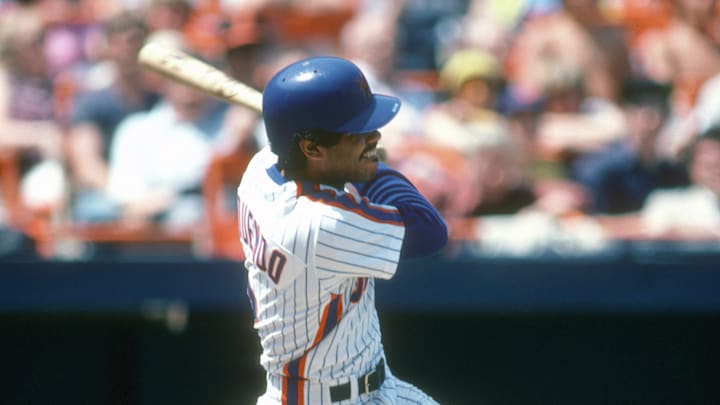The New York Mets have had some slick fielding shortstops over the years. And when one thinks of Mets shortstops, they almost always first think of the sentimental favorite, Buddy Harrleson. And then they tend to think about one of the most dynamic players ever to don a Mets uniform, Jose Reyes. Then, of course, in between those two, was an acrobat who was a part of what was once billed as the best fielding infield ever assembled, Rey Ordonez.
But the one who gets forgotten in all of that was a pretty damn good fielder himself, and he, too, could make a highlight reel here and there and, quite often, make the fans go “Wow!” That Mets shortstop was Jose Oquendo.
Jose Oquendo was to the Mets early on what Rey Ordonez later would be in the 1990s
Oquendo was signed by the Mets as an amateur free agent at the age of 15. He made his major league debut when he was just 19 years old during the 1983 season. From the start, he made plays that made you wonder just how he was able to do it. But he was a bit overmatched at the plate.
Oquendo came up as a switch hitter and while he had a knack for putting the bat on the ball, his average wasn’t really getting much higher than the Mendoza line (named after the Pirates shortstop who couldn’t get above .200).
But he was coming up through the organization when Frank Cashen had been newly appointed GM and was the man chosen to turn the organization around. Cashen had been the architect of the great Baltimore Orioles teams of the late 1960’s and early 1970’s. And his Baltimore infield had some of the greatest fielders in that included Boog Powell at first, Davey Johnson at second, and Brooks Robinson at third…with some guy named Mark Belanger at shortstop.
Belanger couldn’t hit his weight but he sure could field. And you would think that his keystone partner Davey Johnson would appreciate that. Because he was a pretty damn good fielder himself. But, instead, when Cashen brought Johnson in to manage the Mets in 1984, Johnson seemed to distance himself from the mentality of defense over offense.
In the stable of young shortstops in the spring of 1984 were Oquendo, Ron Gardenhire, Ross Jones, and a recently released guy from the St. Louis Cardinals, Rafael Santana. During the course of the season, Oquendo played 81 games, Gardenhire played 74 games, Santana played 51 games, and Jones played 17.
Oquendo hit .222, Gardenhire hit .246, and Santana hit .276 (it would be his highest average of his career), and Jones was 1-10 in limited action.
Johnson would stun people by making a move mid-season to shift third baseman Hubie Brooks to his natural position at shortstop, to make room for Ray Knight at third base and giving the Mets more offense, and relegating Oquendo to becoming a mere defensive replacement late in games.
The 1984 season would prove to be the beginning of the turn around for the Mets organization. The move of Brooks to shortstop would also prove to be something more than just adding offense to the infield, as it showcased him for a trade to the Expos to acquire Gary Carter during that winter.
With the additional acquisition of Howard Johnson that same winter, the Mets had a log jam of infielders, as Kevin Mitchell was also ready to move up the ladder (Davey would often use HoJo and Mitchell at shortstop), and some guy named Kevin Elster wasn’t far behind. And so Quendo became expendable. He was sent to the Cardinals in a trade that pretty much went unnoticed (the other three players are guys you have never heard of) just prior to the 1985 season. And it might have been a mistake.
Essentially the New York Mets traded Jose Oquendo to the Cardinals for Rafael Santana.
Although Oquendo would spend all of the 1985 season in Triple A with the Louisville Redbirds, he joined the Cardinals in 1986 and slid over to second base where he would pair with Ozzie Smith to become one of the most proficient and acrobatic second base-shortstop combos. While he couldn’t supplant Smith at shortstop but a handful of times, he made a career out of playing second base and every other position he was needed…and played it well.
Oh…and his hitting also improved (he hit .267 in his 10 years with the Cardinals). He fit right in with the Cardinals of putting the ball in play and using his speed. Oh…and he ended up have a longer and much more productive career than that Santana guy and that other guy, Elster.
More than anything, it was his feats in the field, though, that would make you take notice. He was really a wonder to watch, and I often wonder what would have been if the Mets had held on to him rather than choose Santana.
